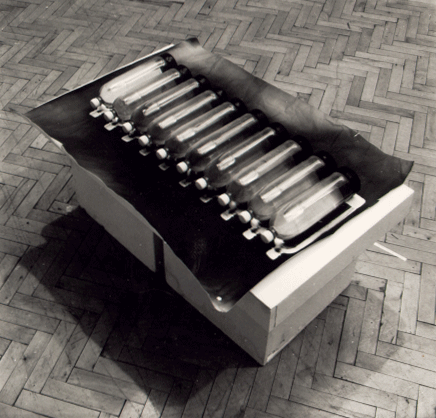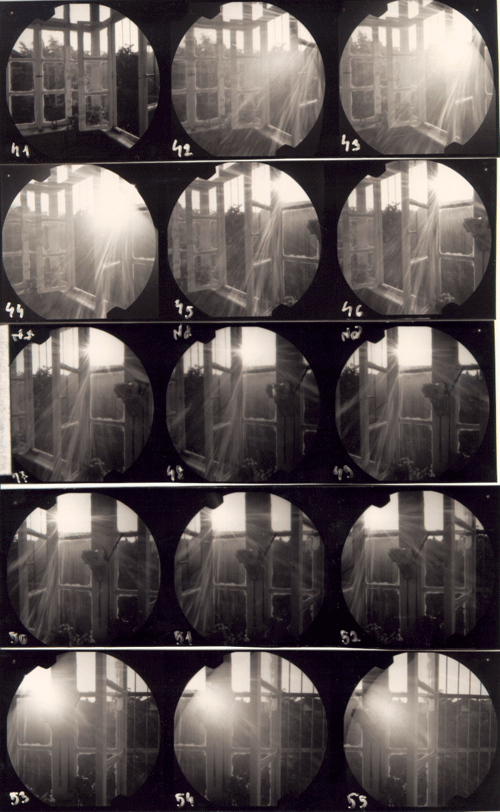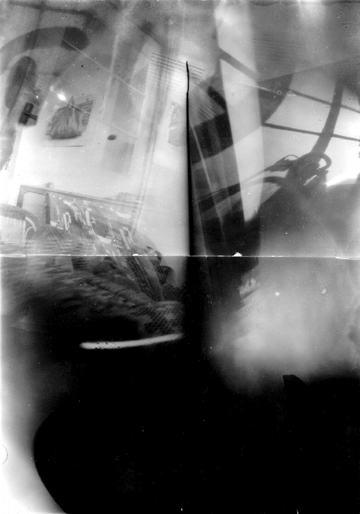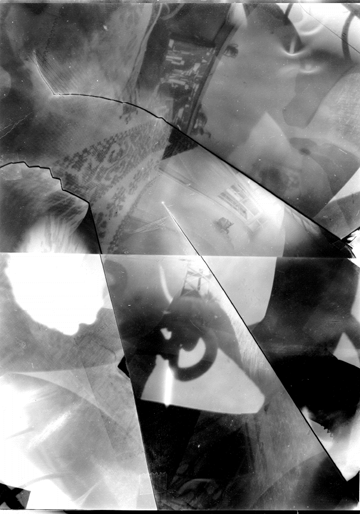|
Zoltán Szegedy-Maszák Works Concerning Images of Light |
||||
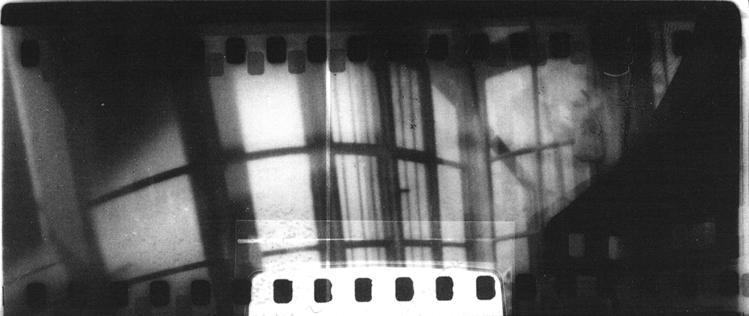 Pinhole Image, 1991 |
I applied photographic methods in almost every early works of mine, yet none of my visual artworks, whether they involve analogue or digital imaging, contain photography in a traditional sense. I use the above definition, Images of Light, which sounds both bombastic and somewhat kitsch, merely because I have failed to find a better description for my real intent. I have never been interested in recording a scene or an object; my real concern has always been the experimentation with optical imaging, or with light as a phenomenon of nature.
|
|||
|
In 1990 I took my first pinhole camera photographs. It remained a major concern for my work during the first half of the 1990s, so that besides a number of sequences, I also used pinhole camera photographs in installations, and even in interactive works.
Between 1990 and 1993 I made several moving images where I exposed each frame in my pinhole cameras for an unusually long period of time, sometimes for several hours, or even days. When these frames are projected in quick sequences, one may experience a perfect illusion of moving images, but the long exposure of the individual frames generates an unusual effect: the created sight is quite similar in character to pixilation, despite the fact that in this case the film sequence is the result of a reversed process. (Whereas in the case of pixilation, the time between the moments of taking the individual frames are longer than usual, here the exposure time of the frames is several hundred or thousand times longer than the time between their expositions.) I used the absurd relations between the times of creating, perceiving, and viewing the image as the main motif not only in video animations, but also in my installation entitled Real Time. In these works, I employed interactive ways of viewing pinhole camera animations, and I also rendered visible a few computers’ algorithmic attempts to define images. Thus, I showed how intelligent apparatuses struggled with interpreting data flows comprised of moving image sequences.
|
|||
|
Even for my pinhole photographs way back in 1990, I made use of two other major characteristics of the medium, owing to the fact that in lack of a lens, no optical distortion occurs in the image (i.e., straight lines remain straight, and the geometry of imaging can be clearly constructed). It does not only imply that every detail of the world in front of the camera will be focused, but that you are free to place the light-sensitive material anywhere within the box itself; you will get focused imaging at every single point. In 1991, after experimenting with tilted image planes of various angles, I started to work with films folded (and sometimes randomly squeezed) into the pinhole camera. Here, in addition to imaging the world, the photographic raw material, with its shadow cast on itself, became a factor in the image constructing process.
|
|||
|
It was in 1994 that I first exhibited a triptych that depicted the full 360-degree surrounding of the camera on films folded into conical forms or into two adjoining cylinders through two, or sometimes through four, lenses. I exposed the original negatives of the three images in 1992–93, but owing to technical difficulties, the final C-print version was only made in 1994.
|
|||
|
Series and images explaining one another are also characteristics of my other works, but I hardly ever considered the pinhole camera pieces as individual photographs. Right from the start, I regarded the typically archaic character of pinhole photography, mostly owing to imaging errors (chromatic aberration, soft key image, diffraction, etc.), as a danger of aesthetizing; a trap that is very easy to walk into. In an effort to prevent this danger, I do not obliterate the traces of adhesives used to fix the negatives in position, or the mechanical damages, tearings, scratches, fluffs, etc., arising from my clumsiness. Even though these “signs” may assist the viewer in comprehending the image making process, they undoubtedly threaten with a type of kitsch. This is the very reason why I insist on the series format, where the images are interpretive of one another, providing the only effective safeguard against empty aesthetization. |
|||
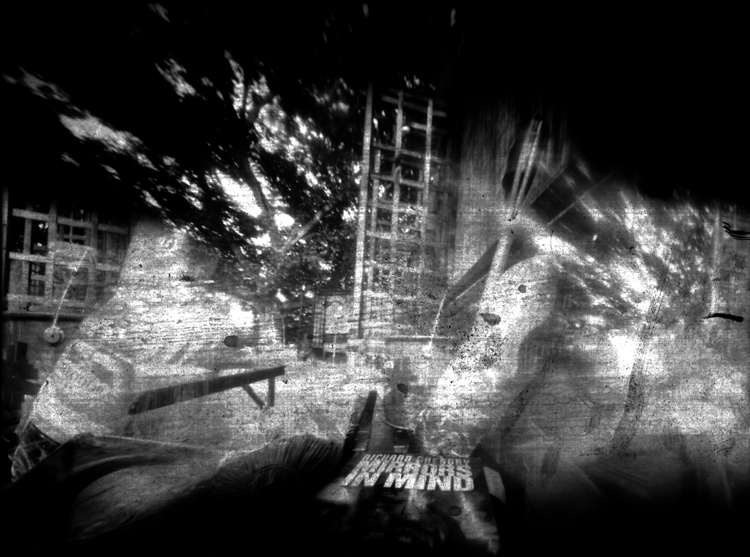 MY MOST BEAUTIFUL SUMMER EXPERIENCES, multi-pinhole photographs 1–14/10, c-print, 41x62 cm, 2007 |
